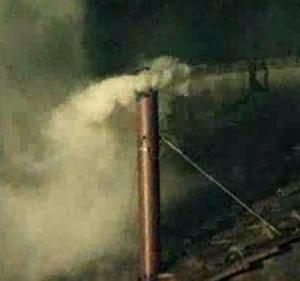Tag: Holy See
Step by Step Through the Papal Interregnum
 If you are looking for a quick run-through of the papal inter-regnum, almost over at this writing, you may be interested in the booklet by The Catholic Truth Society, a handy Step by Step Through the Papal Interregnum (2013) by Monsignor Charles Burns, OBE.
If you are looking for a quick run-through of the papal inter-regnum, almost over at this writing, you may be interested in the booklet by The Catholic Truth Society, a handy Step by Step Through the Papal Interregnum (2013) by Monsignor Charles Burns, OBE.
Cardinal’s mother doesn’t think son can handle the …
Black smoke on the first ballot
Extra omnes
At certain point the Papal Master of Ceremonies, Monsignor Guido Marini, a priest of the Archdiocese of Genova, announces “Extra omnes,” a polite way of saying that all those not belonging in the conclave with the cardinals are to leave now. Monsignor Marini then walks through the center of the Sistine Chapel to the doors and closes them.
Cardinals take oath
After a brief introduction and prayer in the Pauline Chapel, the cardinals walking in order of seniority beginning from the junior cardinal deacon to the cardinal bishops, walked to the Sistine Chapel. Once in their assigned places in the Sistine Chapel, the senior Cardinal, Giovanni Battista Re, read aloud the following formula of the oath prescribed by the apostolic constitution Universi Dominici Gregis:
“In conformity with the provisions of No. 52 of the Apostolic constitution Univesi Dominici Gregis, We, the Cardinal electors present in this election of the Supreme Pontiff promise, pledge and swear, as individuals and as a group, to observe faithfully and scrupulously the prescriptions contained in the Apostolic Constitution of the Supreme Pontiff John Paul II, Universi Dominici Gregis, published on 22 February 1996. We likewise promise, pledge and swear that whichever of us by divine disposition is elected Roman Pontiff will commit himself faithfully to carrying out the munus Petrinum of Pastor of the Universal Church and will not fail to affirm and defend strenuously the spiritual and temporal rights and the liberty of the Holy See. In a particular way, we promise and swear to observe with the greatest fidelity and with all persons, clerical or lay, secrecy regarding everything that in any way relates to the election of the Roman Pontiff and regarding what occurs in the place of the election, directly or indirectly related to the results of the voting; we promise and swear not to break this secret in any way, either during or after the election of the new Pontiff, unless explicit authorization is granted by the same Pontiff; and never to lend support or favor to any interference, opposition or any other form of intervention, whereby secular authorities of whatever order and degree or any group of people or individuals might wish to intervene in the election of the Roman Pontiff.”
Then, one-by-one, each of the Cardinal electors, according to seniority, then personally took the oath according to the following formula:
“And I, N. Cardinal N., do so promise, pledge and swear. So help me God and these Holy Gospels which I touch with my hand.”
After all not required to be in the Conclave are asked to depart, Prospero Cardinal Grech, OSA, (a non-electing cardinal) will give a meditation.
Assembled cardinals March 2013 electing Pope
Going my way???
Conclave date set: for the good of the Universal Church, solum Deum prae oculis habentes.
 The Cardinals have determined that the Conclave will begin on 12 March 2013. The Votive Mass Pro Eligendo Pontifice (For the Election of the Pontiff) will be offered in the morning at Saint Peter’s Basilica by the Cardinal Dean and later that afternoon the cardinals will process from the Pauline Chapel to the Sistine praying the Litany of Saints.
The Cardinals have determined that the Conclave will begin on 12 March 2013. The Votive Mass Pro Eligendo Pontifice (For the Election of the Pontiff) will be offered in the morning at Saint Peter’s Basilica by the Cardinal Dean and later that afternoon the cardinals will process from the Pauline Chapel to the Sistine praying the Litany of Saints.
Holy Hour for Conclave today – cardinals call Church to pray

TODAY, let’s join with the cardinals when they dedicate Wednesday afternoon to prayer and adoration in St. Peter’s Basilica for the upcoming papal election.
The Holy Hour begins at 5pm Rome time (11a.m. EST).
Edward Pentin’s NCRegister article, “Entire Church Invited to Pray for Conclave.”
The worship program.
Please, do your part!








